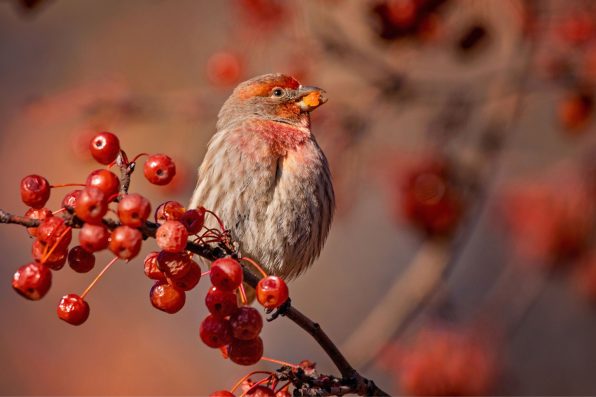Invite More Feathered Friends Into Your Garden By Planting These Fruit And Berry Trees That Birds Love

Birds have the ability to bring vibrant energy to any garden, adding beauty, movement, and even helpful pest control.
One of the best ways to invite more feathered friends into your outdoor space is by growing trees that provide them with fruits and berries they naturally love.
Whether you’re an experienced gardener or just starting out, here are some excellent options that birds can’t resist, encouraging a variety of species to visit your yard.
Crabapples
Crabapple trees don’t just bring stunning spring blooms to your garden. They also provide birds with a rich food source.
Their small, tart fruits are a favorite among species like cedar waxwings, American robins, and house finches. Plus, these birds are especially attracted to the fruit during the colder months, when food is scarce.
Crabapple trees are fairly low-maintenance and prefer full sun and well-drained soil. Just remember to select disease-resistant varieties to avoid running into issues such as apple scab.
Black Cherry Trees
The black cherry tree is a total bird magnet, attracting species such as wood thrushes, northern orioles, and eastern bluebirds.

annette shaff – stock.adobe.com – illustrative purposes only, not the actual bird
Many birds find the small, dark cherries it produces in late summer to be simply irresistible. And in addition to providing food, the tree itself offers some great nesting spots and shelter.
Black cherry trees prefer moist, well-draining soil and full sun to partial shade. It’s also relatively fast-growing and can tolerate a range of environmental conditions, making it a great choice for numerous garden types.
Hackberry Trees
These trees produce small, sweet berries that birds can’t get enough of. Cedar waxwings, northern cardinals, and American robins often stop by hackberry trees, particularly in the fall when the fruits ripen.
The best part? These trees are extremely adaptable and can thrive in a range of soil types – from clay to sandy. Hackberries are drought-tolerant, too, and do best in full sun.
Elderberries
Elderberry bushes, which are technically shrubs, can grow into small trees and are a fantastic source of food for feathered friends. Warblers, vireos, and even woodpeckers are drawn to the dark purple berries, which ripen during the late summertime.
On top of that, if you’re interested in foraging, elderberries are a wonderful choice – as they’re edible for humans when cooked.
They thrive in moist and well-drained soil, preferring full sun. Elderberries are also quick growers and spread easily, so you’ll want to provide some room for expansion.
Red Mulberry Trees
The red mulberry tree is known for producing small, sweet fruits that birds – particularly orioles, tanagers, and woodpeckers – adore. These fruits ripen in late spring and early summer, offering up an early food source for many species.
Red mulberry trees are quite hardy and able to adapt to various soil types, from moist to well-drained areas. And while they prefer full sun, they can still tolerate partial shade.
Cabbage Palm Trees
Last but not least, cabbage palm trees also produce fruit that birds, including mockingbirds, starlings, and warblers, enjoy. The small black berries produced by these palms provide a feast, especially in warmer climates, where food sources may be limited.
When it comes to care, cabbage palm trees are drought-tolerant and prefer full sun. They’re well-suited for tropical and subtropical climates, too, thriving in sandy, well-drained soils.
Sign up for Chip Chick’s newsletter and get stories like this delivered to your inbox.
More About:Gardening